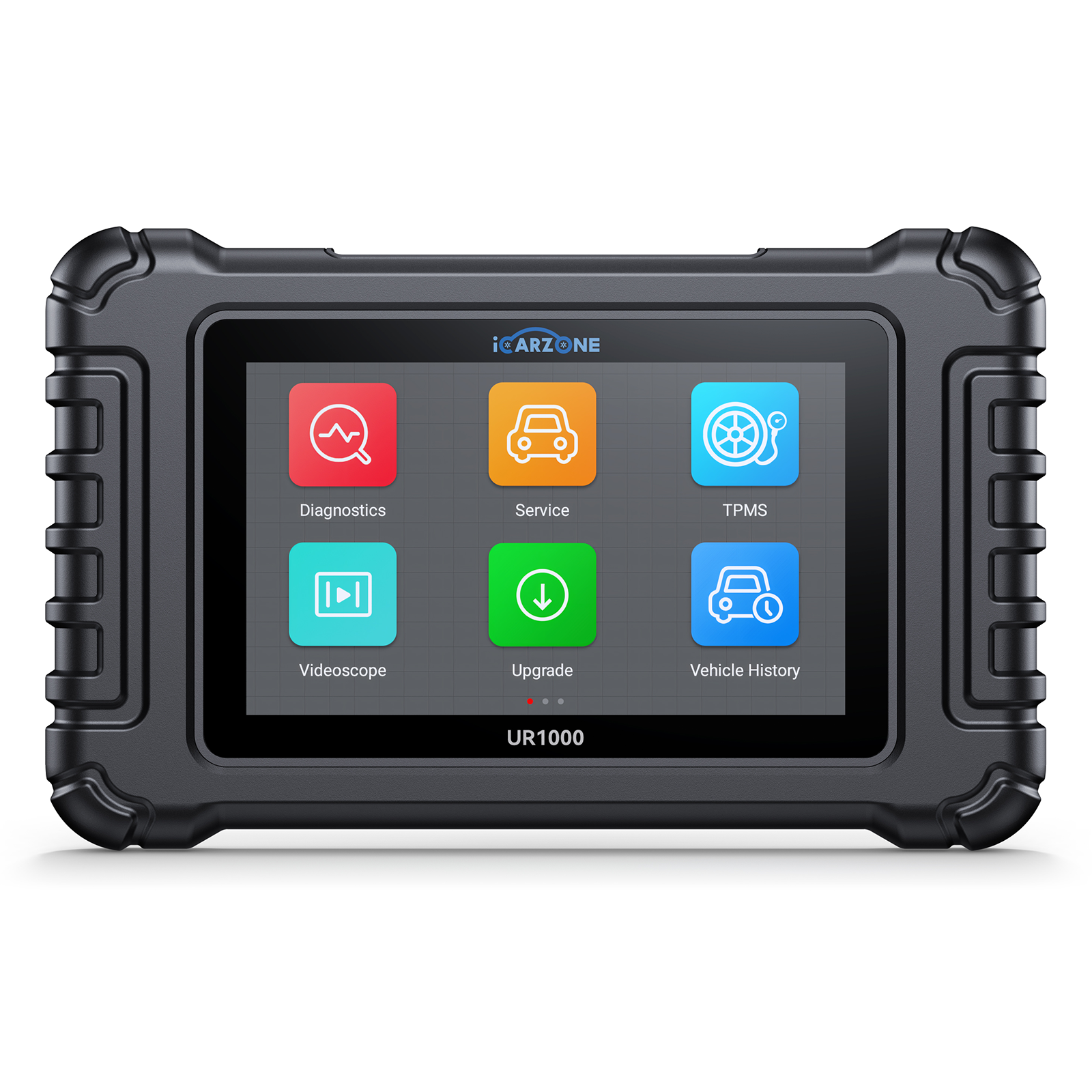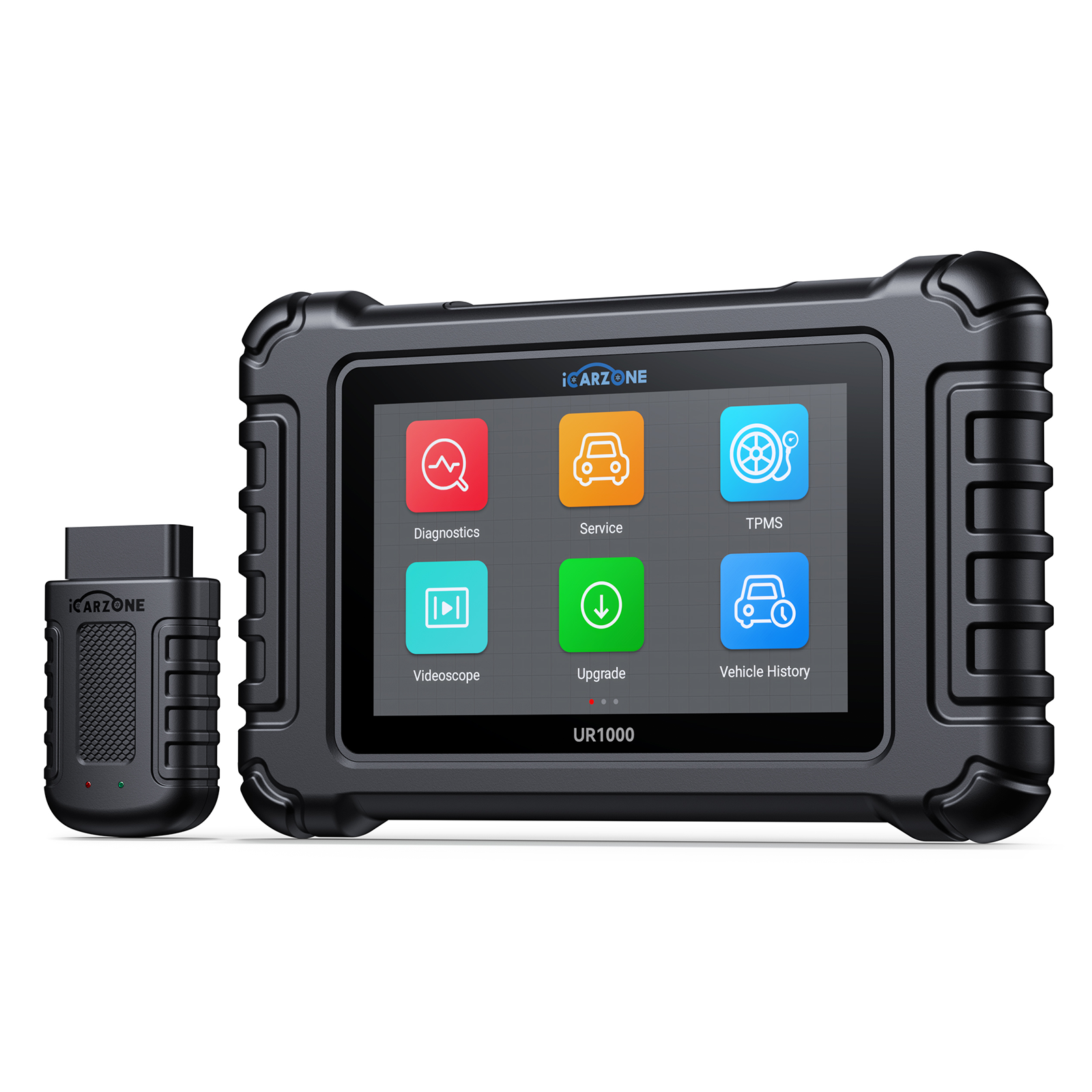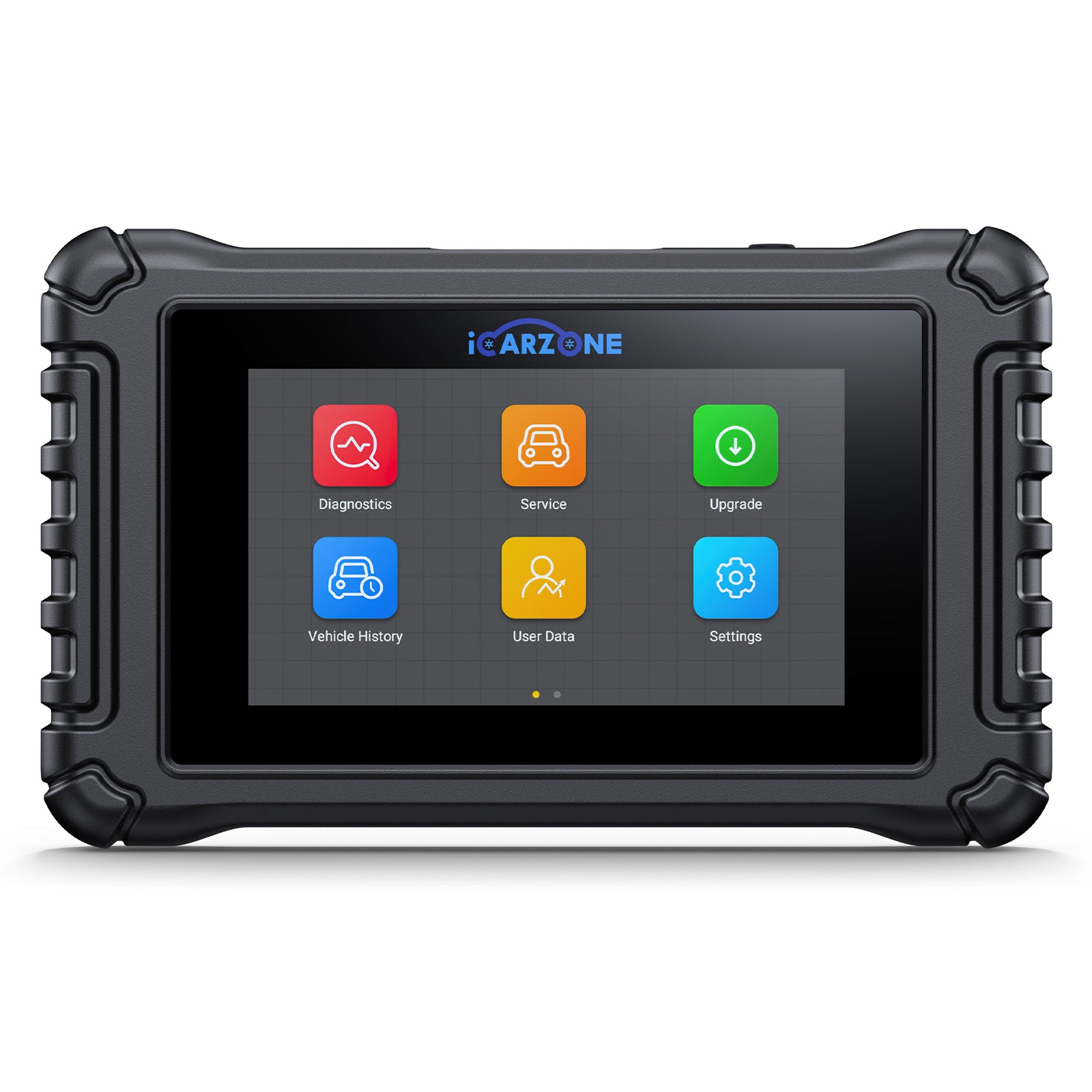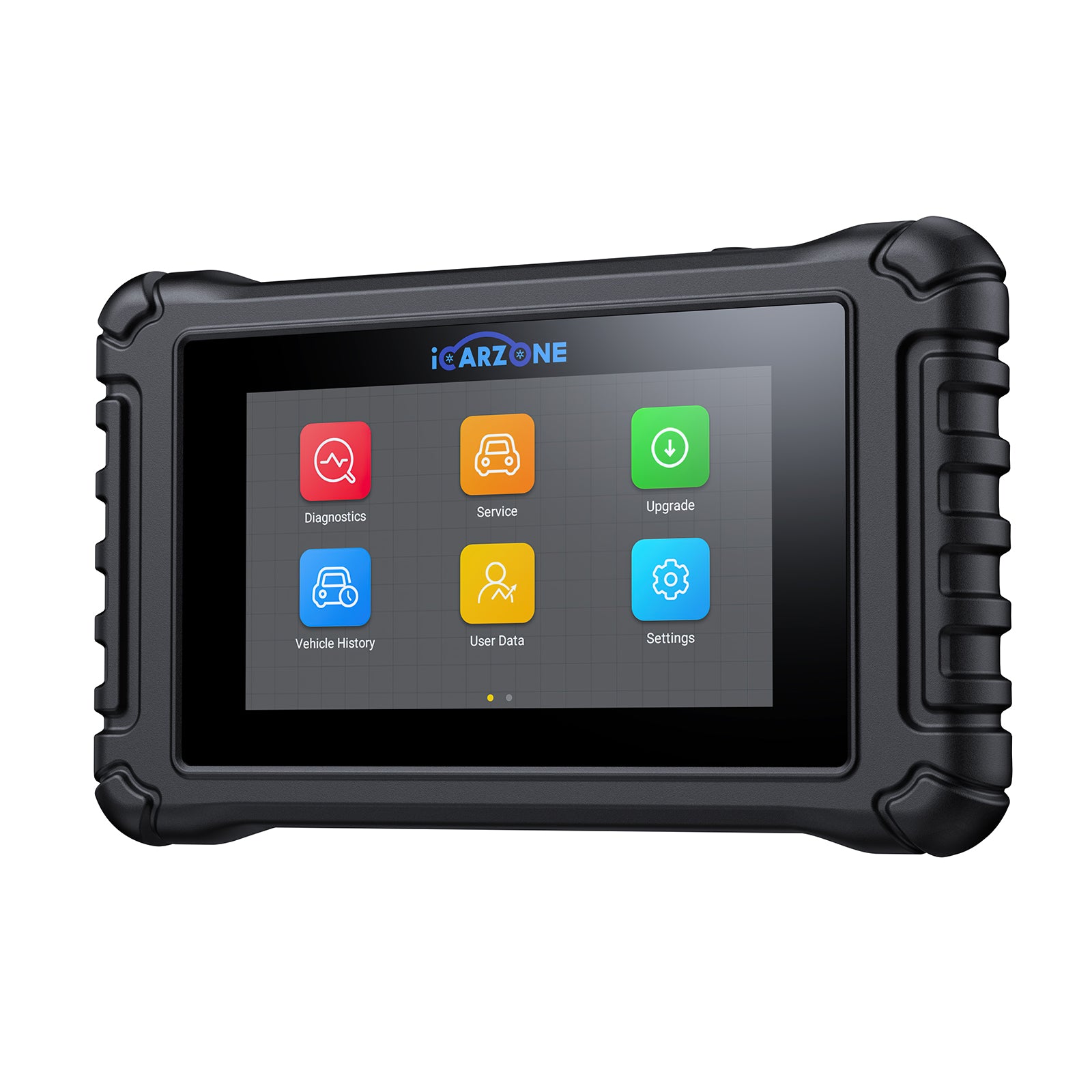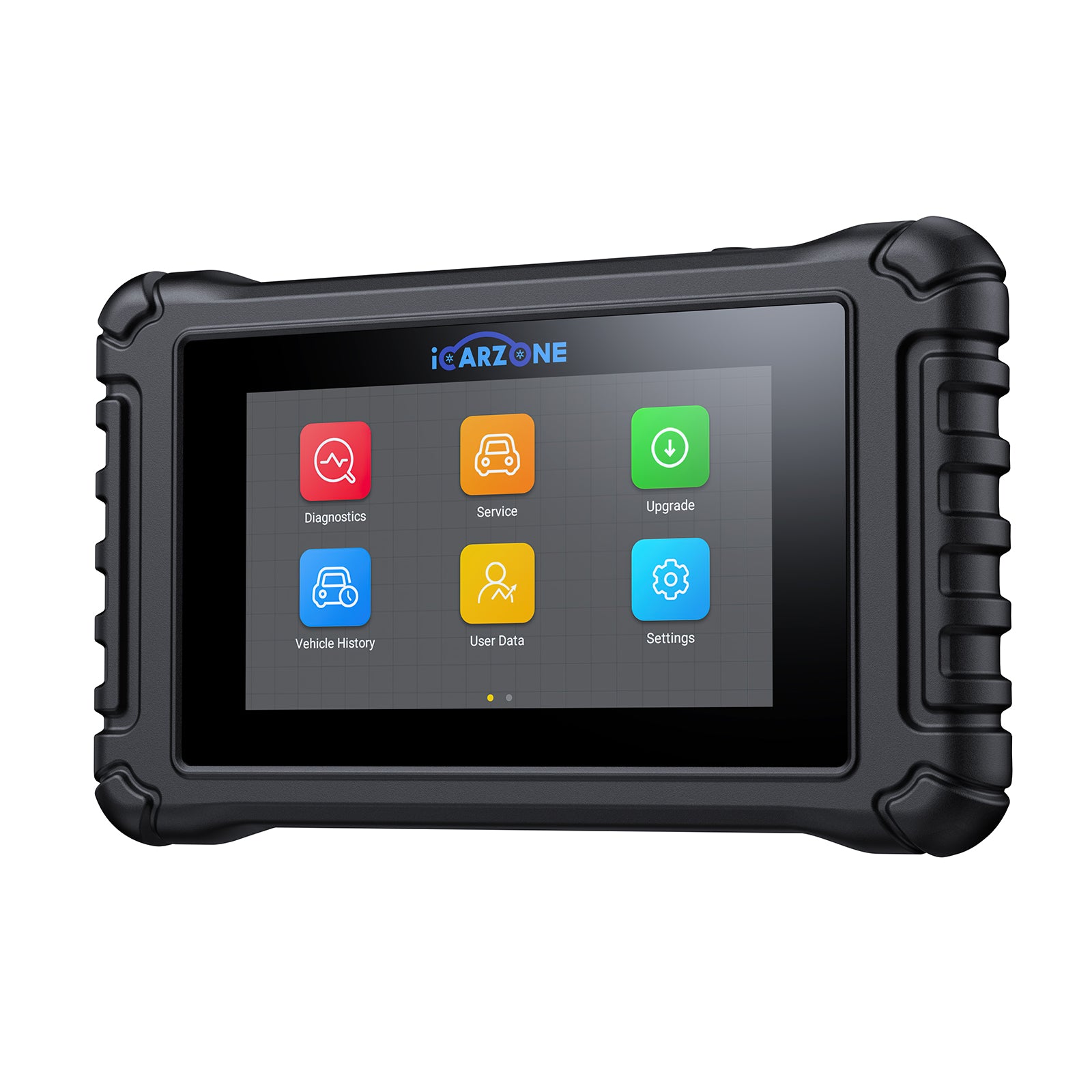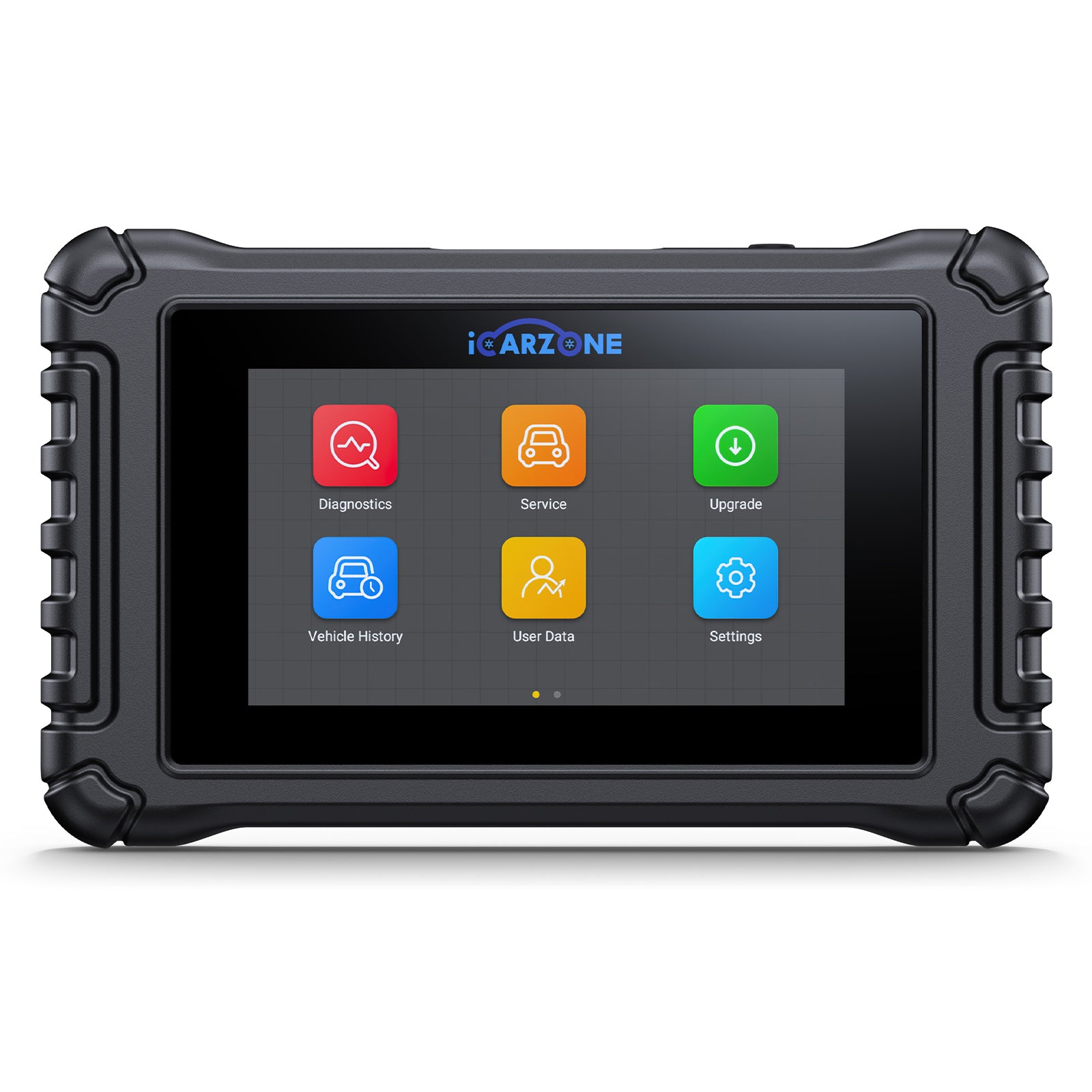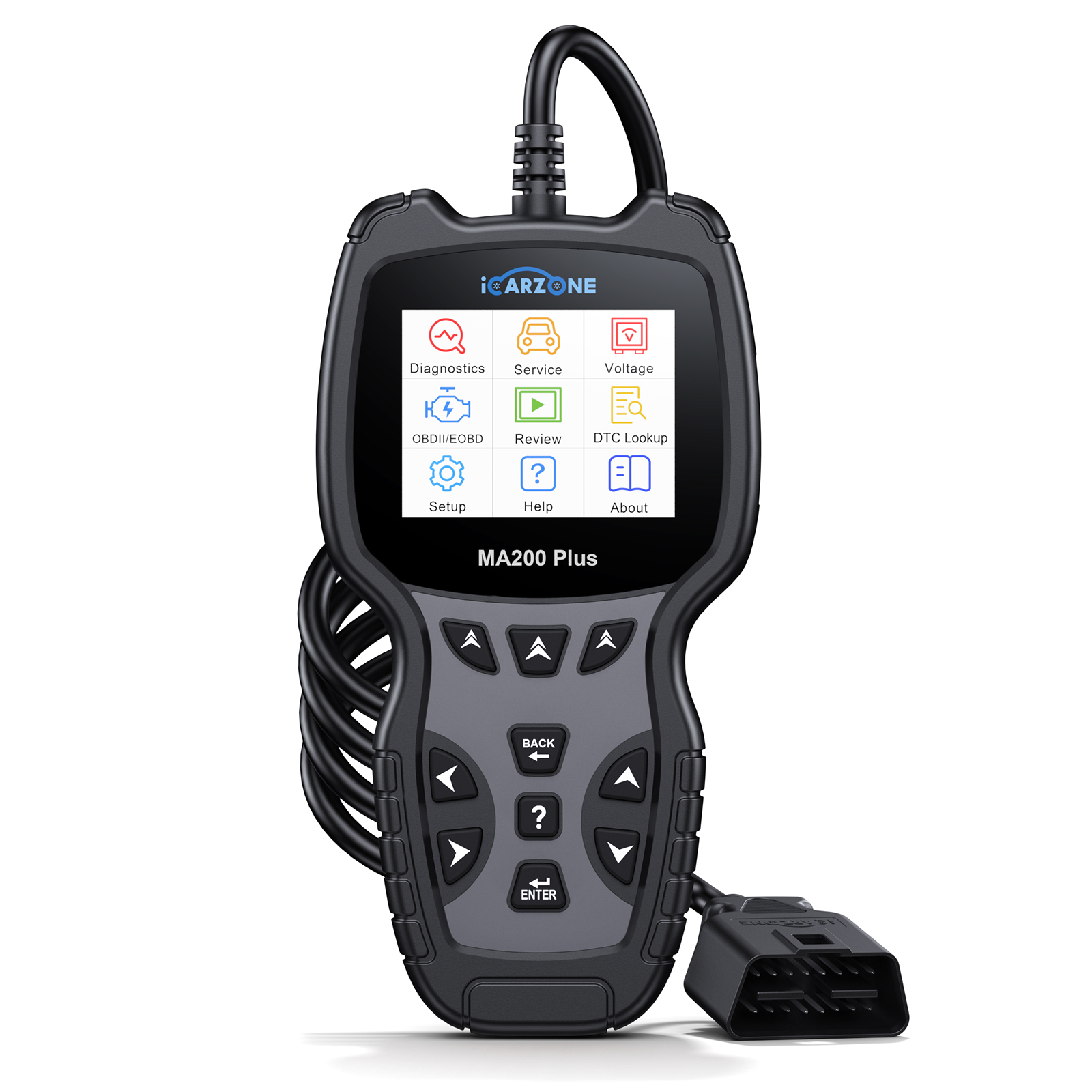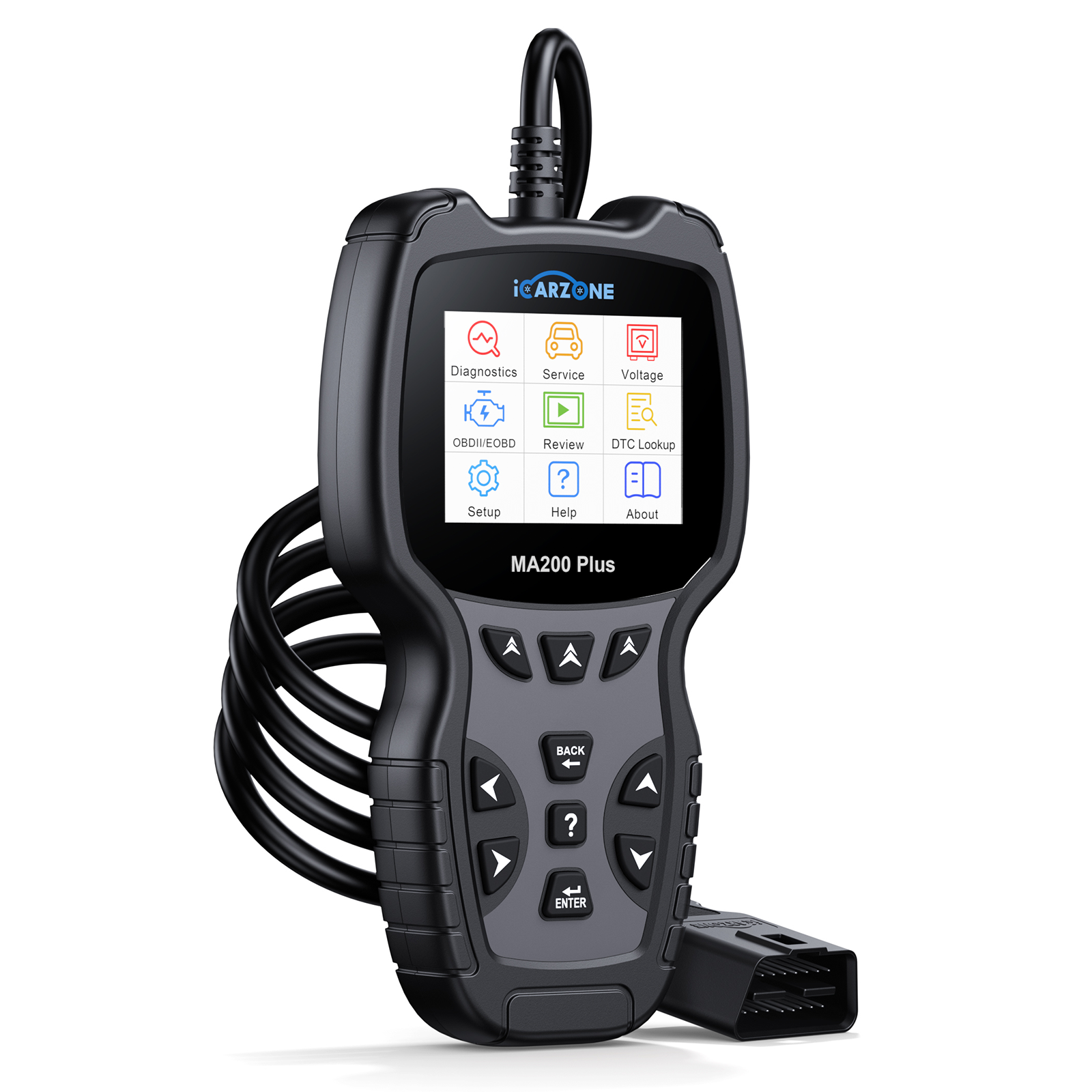P1445 Code: Evaporative Emission System Purge Flow Incorrect
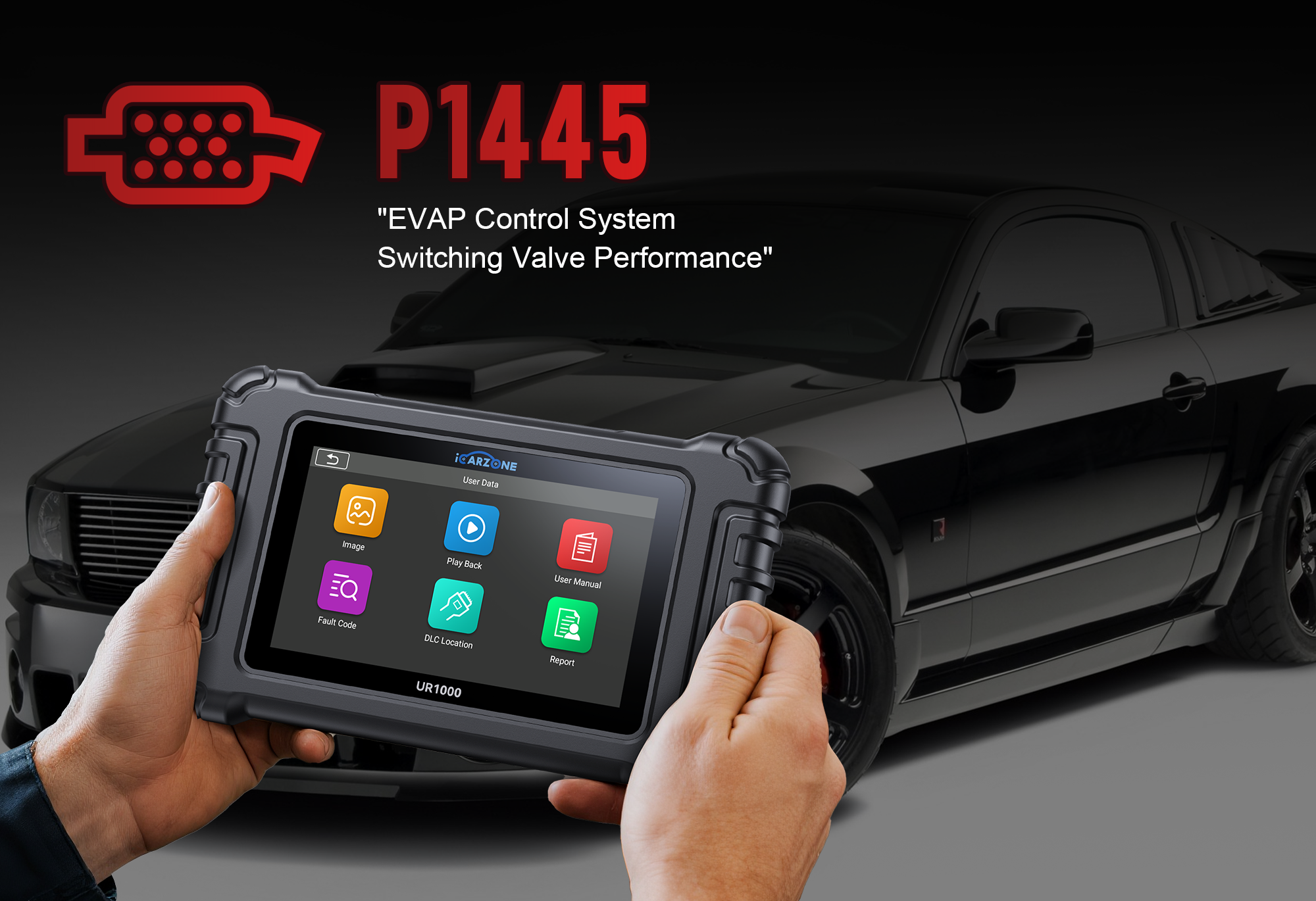
P1445 Code: Evaporative Emission System Purge Flow Incorrect
Published: August 18, 2025Fix P1445 evaporative system issues with expert guidance. Learn diagnosis techniques using the iCarzone UR1000, common causes, and step-by-step repair solutions.
Diagnose P1445 With UR1000 →1. What is the P1445 Code?
The P1445 diagnostic trouble code indicates an "Evaporative Emission System Purge Flow Incorrect" condition. This code specifically relates to your vehicle's evaporative emission (EVAP) system, which is designed to capture and control fuel vapors from the fuel tank rather than releasing them into the atmosphere.
EVAP System Basics
The evaporative emission system prevents hydrocarbon emissions by storing fuel vapors and recycling them into the engine for combustion. Key components include: Charcoal Canister: Stores fuel vapors using activated charcoal Purge Valve/Solenoid: Controls flow of stored vapors to the engine Vent Valve/Solenoid: Allows fresh air into the canister during storage EVAP Lines: Connect components and direct vapor flow Pressure Sensor: Monitors system pressure for leaks and flow issues ECM Control: Regulates purge cycles based on engine conditions
How the ECM Detects P1445
The ECM tests EVAP purge flow during normal operation by: Activating the purge solenoid to allow stored vapors into the intake manifold Monitoring pressure changes in the EVAP system using the pressure sensor Measuring the effect of vapor introduction on engine parameters (fuel trim, idle stability) Comparing actual flow rates against expected values stored in its memory
P1445 is triggered when the ECM detects that purge flow is outside the acceptable range (either too high, too low, or irregular) for two or more drive cycles. This typically occurs during specific operating conditions—usually when the engine is warm and at steady cruising speeds.

2. Why Does P1445 Happen? Common Culprits
P1445 occurs when the ECM detects abnormal vapor flow during purge cycles. Here's a detailed breakdown of the most common causes, based on repair data and technical service bulletins:
Purge Solenoid Issues (38% of Cases)
The purge solenoid is the most common culprit behind P1445, as it directly controls vapor flow: Stuck Open/Closed: Solenoid valve fails to open fully or remains partially open, causing incorrect flow rates Electrical Failure: Coil resistance outside specification (typically 20-30 ohms) prevents proper operation Carbon Buildup: Vapor deposits block the valve orifice, restricting flow Mechanical Binding: Internal components stick due to contamination or age
Case Study: A 2017 Toyota Camry with 85,000 miles presented with P1445. Testing showed the purge solenoid only opened 30% when commanded, restricting flow. The valve was stuck due to carbon deposits from infrequent long drives that prevent complete purge cycles.EVAP Line Problems (27% of Cases)
- Cracked or Disconnected Hoses: Vacuum leaks cause irregular flow measurements
- Clogged Lines: Debris or fuel residue block vapor passage
- kinked Hoses: Improper routing or damage creates flow restrictions
- Loose Connections: Fittings work loose, causing pressure leaks
Charcoal Canister Issues (18% of Cases)
- Clogged Canister: Over-saturated charcoal or debris block vapor flow
- Contaminated Canister: Liquid fuel enters canister (from overfilling), ruining charcoal
- Damaged Canister: Physical damage creates internal blockages or external leaks
- Vent Valve Failure: Prevents proper pressure equalization, affecting purge flow
Other Causes (17% of Cases)
- Intake Manifold Leaks: Vacuum leaks near the purge port affect flow measurements
- ECM Software Issues: Calibration errors in purge flow monitoring algorithms
- Pressure Sensor Malfunction: Incorrect pressure readings lead to false flow detection
- Fuel Tank Issues: Damaged tank vent valve or pressure relief valve

3. How to Spot P1445 Symptoms
P1445 symptoms are often subtle since the EVAP system doesn't directly affect engine performance, but these signs indicate potential issues:
Primary Symptoms
- Illuminated Check Engine Light – The most common and reliable symptom. May appear intermittently before becoming permanent.
- Increased Fuel Odors – Escaping vapors may create fuel smell near the rear of the vehicle or in the engine bay.
- Fuel Economy Reduction – Minor 1-2 MPG decrease due to unburned vapors not being recycled.
Secondary Symptoms (Less Common)
- Idle Fluctuations – Especially during purge cycles when the system should be introducing vapors.
- hesitation During Acceleration – Rare, but occurs in severe cases where purge flow is uncontrolled.
- Failed Emissions Tests – Hydrocarbon emissions exceed limits due to unregulated vapor release.
When Symptoms Appear
P1445-related issues often manifest under specific conditions: After refueling (when vapor pressure is highest) During highway cruising (when purge cycles are most active) In warm weather (higher temperatures increase vapor pressure) After short trips (insufficient engine heat to complete proper purge cycles)
4. Vehicles Most Likely to Get P1445
P1445 is most commonly associated with Toyota and related brands, though similar issues occur in other makes with different codes. Here are models with higher reported instances:
Toyota Models
- Toyota Camry (2007-2017) – Purge solenoid failures common between 60,000-100,000 miles. TSB EG002-09 addresses improved solenoid design.
- Toyota Corolla (2009-2018) – EVAP line routing issues cause kinks and restricted flow.
- Toyota RAV4 (2013-2018) – Charcoal canister contamination from overfilling is prevalent.
- Toyota Tacoma (2012-2019) – Rugged use leads to loose EVAP connections and damaged lines.
Other Brands
- Lexus ES350 (2010-2018) – Similar EVAP components to Camry with same failure patterns.
- Scion tC (2005-2016) – Purge solenoid electrical issues common in high-humidity areas.
- Honda Civic (2012-2015) – Reports of similar purge flow issues (coded as P0441).
- Ford Focus (2012-2018) – EVAP line cracks cause flow irregularities.
Common Design Factors
Vehicles prone to P1445 typically share these characteristics: Purge solenoids mounted in high-heat areas (near exhaust components) EVAP lines routed in vulnerable locations prone to damage Charcoal canisters positioned low, increasing contamination risk Complex EVAP systems with multiple check valves and restrictions Sensitivity to short-trip driving patterns that reduce purge opportunities
5. DIY Diagnosis Steps (With UR1000)
Accurate diagnosis of P1445 requires testing EVAP system function and flow rates. The iCarzone UR1000 provides specialized EVAP testing features that simplify identifying whether the issue is in the solenoid, lines, or canister.
Stage 1: Initial Data Collection (15 minutes)
- Connect UR1000 Scanner – Plug into OBD-II port and power on. Select your vehicle make/model/year.
- Read Complete DTC History – Record P1445 and any related EVAP codes (P0440-P0457 range).
- Check Freeze Frame Data – Note conditions when code was set (temperature, fuel level, engine load).
- Review EVAP System Parameters – In live data menu, monitor: Purge solenoid duty cycle EVAP system pressure/vacuum Short/long term fuel trim values Purge flow status (active/inactive)
Stage 2: EVAP Function Tests (30 minutes)
- Purge Solenoid Activation Test: Use UR1000's "Actuation Tests" menu to command EVAP purge solenoid Listen for distinct clicking sound when solenoid activates/deactivates Monitor pressure changes in EVAP system (should show vacuum during purge) No pressure change indicates failed solenoid or blocked lines
- Vent Valve Test: Activate vent valve through UR1000's actuation menu Listen for clicking sound and monitor pressure equalization Proper function allows system to return to atmospheric pressure
- Leak Detection Pump Test (if equipped): Run UR1000's automated EVAP leak test System should hold pressure/vacuum for specified duration Rapid pressure loss indicates leaks affecting flow
Stage 3: Component Testing (45 minutes)
- Purge Solenoid Testing: Locate purge solenoid (typically near throttle body or intake manifold) Disconnect electrical connector Measure resistance across terminals (should be 20-30 ohms) Check for continuity between terminals and solenoid housing (should show none) Apply 12V power to test mechanical function (listen for clicking)
- Visual Inspection: Trace EVAP lines from solenoid to charcoal canister Check for cracks, kinks, loose connections, or damage Inspect charcoal canister for physical damage or fuel contamination Verify all vacuum lines are properly routed and connected
- Smoke Test Alternative (DIY method): With engine off, disconnect purge line from intake manifold Apply regulated low-pressure air (5-10 psi) to EVAP system Spray soapy water on connections and lines Bubbles indicate leaks affecting flow
| Condition | UR1000 Data Indicators | Physical Inspection Findings |
|---|---|---|
| Purge Solenoid Failure | No pressure change during actuation, no duty cycle response | Resistance outside 20-30 ohms, no clicking sound |
| Clogged EVAP Lines | Abnormal pressure spikes, slow pressure changes | Kinked or contaminated lines, restricted passages |
| Canister Contamination | Erratic pressure readings, flow fluctuations | Fuel odor from canister, wet charcoal in extreme cases |
| Vacuum Leaks | Unable to maintain pressure, fuel trim deviations | Cracked hoses, loose connections, damaged fittings |
6. How to Fix P1445: Step-by-Step Solutions
The appropriate repair method depends on your diagnosis findings. Below are detailed procedures for each common fix:
Purge Solenoid Replacement
For confirmed purge solenoid failure (most common P1445 fix):
- Safety Preparation: Disconnect negative battery terminal Relieve fuel pressure if working near fuel lines Gather supplies: new solenoid, socket set, pliers, dielectric grease
- Locate and Access Solenoid: Find purge solenoid (consult service manual for your vehicle) Typically mounted on firewall, intake manifold, or chassis rail Remove any components blocking access
- Solenoid Removal: Disconnect electrical connector (press tab and pull straight back) Loosen hose clamps or disconnect quick-connect fittings Remove mounting bolts/screws securing solenoid Note orientation of hoses for reinstallation (take photos)
- Installation: Position new solenoid in mounting location Secure with mounting hardware (torque to specification) Reconnect hoses using new clamps if necessary Apply dielectric grease to electrical connector terminals Reconnect electrical connector
- System Reset: Reconnect battery terminal Use UR1000 to clear codes Perform EVAP system leak test to verify repair
EVAP Line Repair or Replacement
For damaged, kinked, or clogged EVAP lines:
- Identify Problem Areas using visual inspection and pressure testing
- Line Repair for minor damage: Cut damaged section with hose cutters Measure and cut replacement hose of same diameter and material (EVAP-rated) Use proper EVAP hose clamps to secure connections Ensure no kinks in repaired section
- Line Replacement for severe damage: Remove damaged line entirely Install pre-formed replacement line (OEM recommended) Secure all connections with new clamps Route line to avoid heat sources and moving parts
- Verification: Perform smoke test or pressure test Check for leaks with soapy water solution Use UR1000 to run purge flow test
Charcoal Canister Service or Replacement
For contaminated or damaged canisters:
- Locate Canister (typically under rear of vehicle near fuel tank)
- Inspection: Check for physical damage Smell for raw fuel (indicates contamination) Inspect vent valve operation
- Service (for minor contamination): Disconnect canister from EVAP lines Allow to air out in well-ventilated area for 24-48 hours Blow compressed air through canister in reverse flow direction
- Replacement (for severe issues): Disconnect all lines and electrical connectors Remove mounting hardware Install new canister and secure mounting hardware Reconnect all lines and electrical connections
ECM Reset and Relearn
For software-related issues or after component replacement:
- Clear Codes using UR1000
- Perform EVAP System Reset: Follow specific relearn procedure for your vehicle Typically involves driving at specific speeds and loads Allows ECM to recalibrate purge flow expectations
- Monitor System: Use UR1000 to track EVAP parameters during normal driving Verify purge cycles activate and complete properly Confirm no code return after several drive cycles
7. P1445 Repair Costs & Pro Tips
Costs vary based on the repair method and whether you perform the work yourself:
DIY Repair Costs
-
Purge Solenoid Replacement: $40-120
Includes: Aftermarket solenoid ($35-100), new clamps/hardware -
EVAP Line Repair: $15-40
Includes: Replacement hose, clamps, fittings -
Charcoal Canister Service: $0-20
Includes: Cleaning supplies, compressed air -
Charcoal Canister Replacement: $80-250
Depends on: OEM vs. aftermarket canister ($70-230)
Professional Repair Costs
-
Purge Solenoid Replacement (Pro): $150-300
Labor: 1-1.5 hours ($100-180), OEM solenoid: $50-120 -
EVAP Line Repair (Pro): $180-350
Labor: 1-2 hours ($100-200), parts: $80-150 -
Canister Replacement (Pro): $250-500
Labor: 1.5-2.5 hours ($150-250), OEM canister: $100-250 -
Diagnostic Fee: $80-150
Many shops apply this toward repair cost if work is authorized
Expert Money-Saving Tips
- Start with the purge solenoid – 38% of P1445 cases are solved with solenoid replacement, making it the best first step.
- Check for TSBs – Toyota has issued multiple technical service bulletins for P1445 that may cover repairs under warranty.
- Use OEM-quality parts – EVAP components are emissions-critical; cheap parts often fail quickly.
- Perform visual inspection first – Loose connections or cracked hoses are often free or cheap to fix.
- Clear codes and test drive first – Intermittent P1445 may resolve with a system reset, especially after fueling issues.
- Verify with UR1000 – Confirm repair success with EVAP flow tests before assuming the problem is fixed.
8. How to Prevent P1445 From Coming Back
Preventing P1445 requires maintaining the EVAP system and adopting driving habits that promote proper purge cycles:
Regular Maintenance Schedule
- Visual Inspections – Every 30,000 miles: Check EVAP hoses for cracks and secure connections Inspect purge solenoid for corrosion or damage Verify charcoal canister is intact and properly mounted
- System Activation – Every 10,000 miles: Take extended highway drives (20+ minutes at 55+ mph) This activates complete purge cycles to clear accumulated vapors
- Fueling Habits – Every fill-up: Avoid overfilling beyond the automatic shutoff Don't top off after pump clicks off (prevents liquid fuel in canister) Tighten gas cap until clicking sound (3-5 clicks)
Protective Measures
- Underbody Protection: Avoid driving over debris that could damage EVAP lines Consider skid plates if driving off-road regularly Clear snow/ice carefully to avoid damaging underbody components
- Connector Maintenance: Apply dielectric grease to EVAP electrical connectors Clean corrosion from terminals if present Ensure connectors are fully seated and locked
- Environmental Protection: Avoid fueling in heavy rain or snow when possible Park in covered areas to reduce moisture exposure Use quality fuel to reduce vapor contaminants
Maintenance Tools & Products
- EVAP System Care: EVAP-specific hose (resistant to fuel vapors) High-quality hose clamps (stainless steel) Dielectric grease for electrical connections
- Diagnostic Tools: UR1000 scanner with EVAP testing features Handheld vacuum pump for pressure testing Soapy water solution for leak detection
- Fuel System Care: Fuel system cleaner (reduces vapor contaminants) Proper gas cap maintenance/replacement Avoiding low-quality gasoline
Monitoring with UR1000
Regularly check these parameters to catch issues before they trigger P1445: EVAP system pressure during idle and driving Purge solenoid activation during highway driving Fuel trim values during purge cycles System integrity tests during key cycles
9. P1445 FAQs
Yes, but long-term driving with P1445 may cause failed emissions tests and could mask other EVAP issues. It won't damage the engine but should be repaired.
Unlikely. P1445 relates to purge flow, while gas cap issues typically trigger P0457 or P0456 codes for leaks, not flow problems.
They're similar—both indicate purge flow issues. P1445 is manufacturer-specific (Toyota), while P0441 is the generic OBD-II code for the same condition.
Yes. Extreme temperatures and humidity can affect EVAP system pressure and flow measurements, causing intermittent P1445.
Purge solenoid replacement takes 1-2 hours for DIYers. More complex line or canister repairs may take 2-4 hours.
Yes. Short trips prevent the engine from reaching temperatures needed for proper purge cycles, leading to vapor buildup and flow issues.
Temporarily, but the code will return unless the underlying flow issue is repaired. Clearing only removes the warning, not the problem.
Possibly. EVAP components are often covered under emissions warranties for 8-10 years/80,000-100,000 miles, depending on the vehicle.
10. Final Thoughts
P1445 indicates an incorrect purge flow in the evaporative emission system, most commonly caused by a faulty purge solenoid, damaged EVAP lines, or charcoal canister issues. Unlike performance-related codes, P1445 primarily affects emissions rather than engine operation, but addressing it is important for environmental compliance and fuel efficiency.
The key to successful P1445 repair is systematic diagnosis using tools like the iCarzone UR1000 to test solenoid function, check for leaks, and verify flow rates. This prevents unnecessary parts replacement and ensures the correct repair the first time.
Most P1445 cases can be resolved with purge solenoid replacement or simple EVAP line repairs, making it a DIY-friendly repair for those comfortable with basic automotive work. Prevention through proper fueling habits, regular inspections, and occasional highway driving to activate purge cycles will help keep the EVAP system functioning properly.
With the right diagnosis and repair approach, you can fix P1445 permanently and maintain a properly functioning evaporative emission system for years to come.
Diagnose EVAP Issues Like a Pro
The UR1000 provides specialized EVAP testing, purge solenoid actuation, and flow monitoring to quickly identify P1445 causes and verify repairs.
Get Your UR1000 Diagnostic Tool

